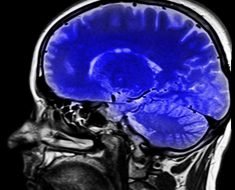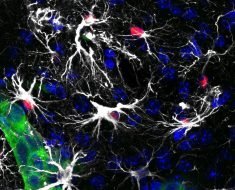Hand foot and mouth disease is a viral illness commonly affecting children below 10 years of age. The infection caused commonly by coxsackie A16 virus of the enterovirus family often is very contagious and spreads rapidly to form outbreaks and even epidemics affecting a large number of children.
In most cases the infection is uncomplicated and resolves on its own in 7 to 10 days. Diagnosis is usually clinical.
Steps for of diagnosis of hand, foot and mouth disease
Steps for diagnosis include (1-6):
- Clinical history of fever, sore throat, malaise, headache and general feeling of unwell is commonly seen. Children with the infection often may have a history of being exposed to the infection at school or day care.
- A physical examination reveals two major features – the characteristic blisters and vesicles on the hands, feet, buttocks, genitals and diaper area and mouth ulcers.
The mouth lesions are typically yellow with red haloes and are present in the mouth, throat, tonsils, insides of the cheeks, over gums and tongue.
Skin lesions are usually non itchy but may be painful. Lesions in the mouth are painful and make eating, drinking and swallowing difficult.
- Diagnosis is suspected based on characteristic features of the patient that distinguish HFMD from other viral infections. This includes age of the patient (usually below 10 years) and pattern of the symptoms.
The symptoms begin with fever and a sore throat. In two or three days spots appear in the mouth and later on the palms of hands or soles of feet. The sores are smaller than chickenpox sores.
- Clinical diagnosis is confirmed by sending a throat or stool sample to the laboratory. The result usually takes a few days. In the laboratory the strain of enterovirus causing the infection is determined and confirmed. Clinical diagnosis is important in patients who develop complications like meningitis.
Other conditions with similar symptoms to hand, foot and mouth disease
Other conditions that lead to similar infections and symptoms include (3):
- Herpangina. This is caused by similar Coxsackie viruses or echoviruses. There may be similar lesions in the mouth but there are no blisters or spots over the skin elsewhere.
- Chicken pox – lesions of HFMD are usually smaller than checken pox lesions. However other symptoms may be confusing and often appear similar.
- Herpes infections. This could be herpes simplex infections or a recurrence of chicken pox lesions called Herpes zoster.
- Other conditions like Kawasaki disease, viral pharyngitis, drug side effects like Stevens-Johnson syndrome and Toxic epidermal necrolysis (TEN).
Laboratory diagnosis of hand, foot and mouth disease
Laboratory diagnosis involves (6):
- The samples from throat, fluids from blisters and stools are cultured in the laboratory and once their numbers are raised by incubating them in culture media in the lab they are examined under the microscope.
EV71 can be shed in the stool for several weeks and stool samples by taking a rectal swab are also appropriate for diagnosis of the virus. This type of examination may usually be time consuming and results often come after an infection has resolved.
This type of diagnostic procedure however is important in determining cause of outbreaks and epidemics. Stool samples do not give an idea of a recent infection but fluids from the blisters are often diagnostic of the infection.
- Blood and serum samples as well as Cerebrospinal fluid may be sent for detection of the virus. The CSF samples are important in complicated cases with viral or aseptic meningitis.
- Reverse transcription by polymerase chain reaction (RT-PCR) is used to detect the virus in the samples. This detects the viral genes or DNA and RNA in the samples.
Sources
- http://www.ncbi.nlm.nih.gov/pubmedhealth/PMH0001961/
- www.nhs.uk/Conditions/Hand-foot-and-mouth-disease/Pages/Diagnosis.aspx
- http://www.patient.co.uk/doctor/Hand-Foot-and-Mouth-Disease.htm
- http://www.cdph.ca.gov/HealthInfo/discond/Documents/HFMD.pdf
- http://www.cdc.gov/hand-foot-mouth/about/diagnosis.html
- www.wpro.who.int/…/GuidancefortheclinicalmanagementofHFMD.pdf
Last Updated: Jun 4, 2019

Written by
Dr. Ananya Mandal
Dr. Ananya Mandal is a doctor by profession, lecturer by vocation and a medical writer by passion. She specialized in Clinical Pharmacology after her bachelor's (MBBS). For her, health communication is not just writing complicated reviews for professionals but making medical knowledge understandable and available to the general public as well.
Source: Read Full Article





